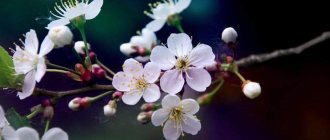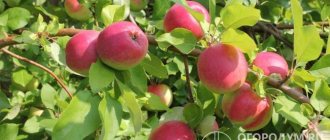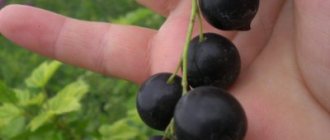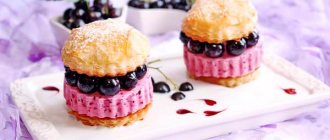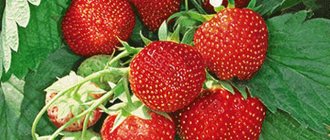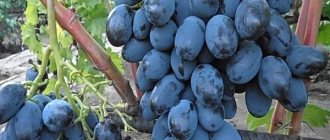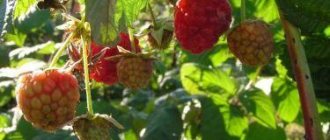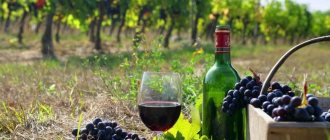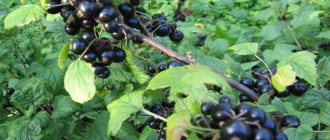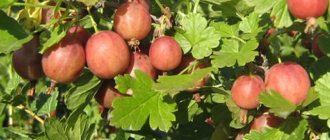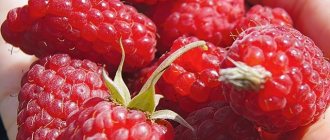Black currant Perun - winter-hardy variety
The black currant variety Perun is the result of many years of work by breeder A. I. Astakhov, who developed this variety in the 90s of the last century. In 1995, it was included in the State Register and recommended for cultivation in the Central and Central Black Earth regions of the country. What Perun black currant is, a description of the variety and reviews from gardeners is in the article.
Description of the variety
Black currant variety Perun has many positive qualities:
- interesting taste;
- high productivity;
- winter hardiness;
- easily tolerates frost when blooming;
- resistant to anthracnose and American powdery mildew;
- resistant to kidney mite;
- easily tolerates drought.
Gardeners note the pleasant aroma and sweet taste of the fruit. The berries are round, not ribbed, with a glossy, delicate skin of rich black color. In favorable years, up to 2 kilograms of tasty and healthy berries are harvested from one bush. Sometimes the weight of one berry reaches 4 grams. Large clusters contain 6-11 juicy berries.
This variety is universal in use. The berries are suitable for various types of preparations: juices, compotes, jams.
Landing rules
Gardeners are often dissatisfied with the poor survival rate of currant cuttings. Yes. This variety is difficult to propagate. For a positive result, you need to make an effort and learn how to plant currant bushes correctly.
The most important thing is that currant seedlings should not be sold with an open root system. Such planting material does not take root. Good nurseries sell Perun seedlings only in pots.
The place where young plants are planted is also important. This is a sun-loving plant. Seedlings should be planted in an open, well-lit place, in nutritious, loose soil that is well-permeable to air and does not retain moisture.
And another success factor is planting time. Young plants should be planted only in autumn. For the middle zone, the optimal time for planting Perun is considered to be the end of September - the beginning of October.
Important! In extreme cases, it is possible to plant currants with the onset of spring before the juice begins to flow. In this case, the seedling must be protected from scorching sun rays and the soil underneath must be regularly moistened.
- 10-14 days before planting, it is necessary to prepare holes 45 centimeters deep.
- Mix the earth taken out of it with a bucket of humus, adding 100 grams of superphosphate.
- An interval of 2 meters is required between holes, because Perun is a spreading shrub.
- The plant is placed in the center of the recess and its roots are covered with prepared soil.
- The shoot is cut off, leaving two buds above the ground - this requirement cannot be neglected.
- Then water generously and mulch the soil around the seedling with peat, sawdust, humus or dry leaves.
It is necessary to trim the shoot so that the plant has enough strength to develop the root system. If this is not done, the cutting will grow not roots, but green mass, which will lead to its weakening.
Proper watering
Perun black currants need to be watered often and regularly. It tolerates dry periods well, but at the same time the yield decreases. But drip irrigation will help solve this problem.
Watering is necessary during the formation and ripening of berries, as well as after the harvest has already been harvested. Autumn watering is also important, because the condition of the root system affects the survival of the bush in winter.
Feeding
Fertilizing is required infrequently. Once a year is enough. In the fall, it is better to feed with organic matter: compost, wood ash, bird droppings, manure.
And in the spring it is better to use mineral fertilizers rich in nitrogen, phosphorus, and potassium.
Trimming
During growth and development, the formation of a bush is required. Every year, sanitary pruning is required, in which dry, damaged and diseased branches are removed.
It is also important to remove weeds under Perun bushes and regularly loosen the soil around the plants. Mulch will help protect the roots from overheating and drying out.
Disease and pest control
This variety is moderately resistant to diseases. For this reason, preventive treatment is required in early spring. Repeat this before and after flowering.
When insect pests appear, additional treatment with insecticidal agents is required.
The preparations must be prepared according to the instructions indicated on the packaging.
How does one cope with winter?
This shrub is resistant to cold weather. Therefore, in temperate climates it overwinters without additional shelter. But it is better not to grow it in more northern latitudes, because this shrub has a rather late ripening period and the berries will not have time to ripen before the weather gets colder.
Reviews
Gardeners disagreed. Some people like the variety due to its smooth ripening, pleasant taste and unpretentiousness. Others are not happy that the berries are not large, this reduces their market attractiveness.
Experienced amateur gardeners recommend:
- Every spring, preventive measures are required to combat powdery mildew;
- It is better to plant seedlings in openwork shade - under a tree or next to a lattice fence. In the scorching sun, the bushes overheat and shed their leaves;
- You can’t get carried away with feeding. Excess nutrients lead to increased growth of young shoots and reduced yield.
With the right approach, the harvest is guaranteed to be high and of high quality. The berries do not differ much in size from each other.
Main pros and cons
Currants stand out for their positive characteristics:
- winter hardiness;
- frost resistance in the flowering phase;
- unique taste and persistent odor;
- high yield;
- simple reproduction;
- resistance to pests;
- relative immunity to disease;
- ability to self-pollinate;
- tolerance to lack of humidity;
- good transportability and long shelf life.
Negative sides. In a dry year, the berries are small, although sweeter and richer than ordinary fruits. Regardless of the weather, the size of the currants of one bush differs.
Description and characteristics of black currant variety Perun, planting and care
Black currant Perun can be found in almost every garden plot. The history of these fruits dates back to the ancient Russian monks, who were the first to cultivate this berry bush. Now currants are grown in Europe. The Perun variety has a significant number of advantages, which are impossible to obtain without knowledge of the basic intricacies of growing shrubs.
History of the variety's creation
The first information about this mid-late variety of currant appeared in the tenth century, when mainly monks in Kievan Rus were engaged in the cultivation of this shrub. The modern appearance of this berry was obtained by A.I. Astakhov and in the late 90s it was added to the state register. To obtain the Perun variety, the Bredthorp variety was crossed.
Description and characteristics of Perun currant
The main thing a gardener needs to know about this crop is the late harvest of berries, the average size of the bush and its spreading nature. The first harvest appears only at the end of July, and its harvesting continues until the end of August. It is also important to note that this currant does not require other varieties for pollination.
Perun berries are quite large - about 2-4 grams, and have a bright aroma. The branches of the bush are equipped with three-lobed leaves with wrinkled elements. You can get up to ten berries from one brush. According to the description of the Perun currant variety, the taste quality is rated 4.9 points out of 5.
Advantages and disadvantages
The Perun variety has a sufficient number of positive characteristics for which this berry bush is highly valued:
- High yield.
- Adaptability to low temperatures and diseases.
- Resistance to cold during flowering.
- Not demanding on abundant watering.
- High taste qualities.
- Good transportability.
- Possibility of long-term storage.
- The universal purpose of berries.
The disadvantages of black currant are directly related to its industrial use. The main negative side is that there is a fairly large number of small berries. For this reason, the crop does not have the most attractive presentation.
Another significant drawback is that the taste of the berries directly depends on climatic conditions. In dry and hot weather or, conversely, at fairly low temperatures, the berries will have a sour taste.
Features of growing crops
Planting a black currant bush is quite simple if you know the basic nuances and features of cultivation. The correct choice of location and compliance with the necessary planting techniques will provide the gardener with unusual and tasty berries.
Time and place of landing
The most preferred time for planting is autumn. This way the seedling will have time to take root, take root and begin to grow actively before spring. An open, bright and sheltered area from the wind would be a suitable location. It is better to plant currants in areas with loose, air-permeable soil.
Seedling preparation
It is extremely important to trim the cuttings of the seedling to 2 buds before planting. Otherwise, the plant will not be able to take root, since it will devote all its substances not to the development of the root system, but to the growth of shoots. It is also worth noting that currant seedlings are not sold with open root systems.
Planting process
Planting of the Perun variety is carried out according to the following scheme:
- A hole about 40 centimeters deep should be prepared a week in advance.
- The soil that was removed from the hole must be mixed with humus.
- Afterwards, the seedling needs to be placed in a hole and the roots sprinkled with soil (it is important to maintain the interval if there are several shrubs).
At the final stage, the planting site is watered abundantly, and it is recommended to mulch the ground (humus, peat, foliage).
Tips for caring for currants
The agricultural technology for caring for the Perun variety is not particularly complicated, but it has its own characteristic features. The required care consists of fertilizing, removing weeds, forming a bush and eliminating pests.
Watering
Perun needs regular irrigation. The shrub requires abundant watering during the periods of ovary formation, berry ripening, and also during the period after harvesting. Currants will also need a lot of liquid in the fall, since the healthy condition of the roots will depend on this.
Fertilizer and feeding
It is not necessary to apply fertilizer mixtures and fertilizing too often. For this crop, one fertilizer per year will be enough - in autumn or spring. In the fall, it is worth using manure, droppings, ash, and compost. If fertilizing is applied in the spring, minerals should be used: nitrogen, potassium or phosphorus.
Shrub pruning
The shrub needs shaping as it grows and develops. At least once a year, sanitary pruning should be carried out, which consists of eliminating dry, diseased and broken shoots. Post-planting pruning of shrubs is also carried out. To increase the number of berries at the next harvest, it is recommended to remove excess branches, as well as shoots that grow inside the bush.
Diseases and pests
Perun currant is characterized by average resistance to various lesions and pests. In this regard, the gardener will need to carry out preventive treatments on his seedlings in early spring.
It is worth noting that the Perun variety is adapted to a disease such as powdery mildew. A similar procedure is repeated immediately after the bush blooms. Currants are often attacked by the following pests: bud mites, anthracoses and aphids.
When insect pests appear, it is recommended to treat the bush with insecticides. Since the roots of this crop do not go deep inside, it is important to eliminate the weeds that grow around the currants. It is also recommended to periodically loosen the soil and use mulch to protect the roots from overheating.
Breeding methods
The Perun variety is bred in several ways: cuttings, dividing the bush and layering. To propagate by layering, it will be enough to press the currant shoot to the ground so that it can produce adventitious roots and lateral shoots.
It is recommended to carry out propagation using cuttings from May to early June. It is also worth remembering that the cuttings must have at least three buds. Next, the cuttings are placed in the soil at an angle and buried to the top. After three weeks, such a seedling should take root and take root.
Advantages and disadvantages
Currant Yadrenaya
When purchasing cuttings of this crop for your plot, you should definitely pay attention to the Perun variety, as it has certain advantages that distinguish it from other crops:
- attractive yield characteristics;
- resistance to temperature changes, especially spring and winter frosts;
- average level of resistance to many currant diseases and insect attacks;
- bushes tolerate periods of drought normally;
- excellent taste with a wonderful balanced taste and pronounced aroma;
- low maintenance and ease of reproduction;
- versatility of use;
- good transportation and storage performance;
- self-pollinating.
But there are also disadvantages to this variety. Those who grow berries for sale are not too fond of Perun currants:
- fruits of different sizes, which buyers will not like;
- the dependence of the taste and size of berries on weather and climatic conditions (during drought and cold, the berries are much more sour and smaller).
Even the dissatisfaction of some summer residents should not affect the objective assessment of this variety. Perun currant is an excellent mid-late variety that, with proper care, will delight you with a wonderful, tasty harvest.
Black currant Perun: description of the variety and characteristics, rules of planting and care
Nikitenko Alex andra
Our address: Moscow Region, Egoryevsky district, Efremovskaya village We open on April 15!
Look for our banner on the road! Photo Instructions for landing
Apricot
Actinidia
Cherry plum
Grape
Cherry
Blueberry
Pear
Blackberry
Honeysuckle
Yoshta
Kalina
Strawberry
Gooseberry
Raspberries
Sea buckthorn
Rowan
Plum
White currant
Red currants
Black currant
Cherries
Cherevishnya
Apple tree
Trees
Hydrangeas
Shrubs
Clematis
Peonies
Lianas
Rhododendron
Conifers
The nursery opens on April 15th!
New entrance to the Nursery from spring 2021
Photo of black currant variety Perun
Description of black currant variety Perun
Agricultural technology of black currant.
Features of planting and growing.
1. General information about black currants. Useful properties of black currant.
Black currant has many beneficial properties for the body. Black currants are called a storehouse of vitamins. The berries of this tasty plant contain provitamin A, essential vitamins B and P, as well as pectin substances, useful sugars, phosphoric acid, carotene and essential oil, which are important for the body.
An adult needs approximately 20 berries to satisfy the average daily requirement for ascorbic acid. Eating currants helps avoid problems with the cardiovascular system and prevents cancer. In addition, these amazing berries have been proven to have the amazing ability to prevent diabetes and maintain visual acuity for many years. For atherosclerosis, eating berries is simply an irreplaceable remedy. It should also be noted that currants perfectly increase human immunity and resistance to colds.
Currant berries are a combination of vitamins and various microelements that give them unique healing properties. The acidity of currant fruits of different varieties can vary within significant limits. The berries contain malic, citric and oxalic acids. In addition, the fruits contain a large amount of fiber, which is essential for the body. As the berries ripen, the level of sugar content rises, and the content of pectin substances decreases noticeably. The presence of carotenoids in berries is very low, but they are rich in vitamin E.
2. Choosing a place for black currants.
– Black currants require a well-lit place. Otherwise, the sugar content of the berries may decrease and the overall yield will decrease.
– Black currants should be planted along fences or other hedges. A little wind protection will not harm it, especially on the north side.
– Black currants do not tolerate stagnant water. If there is a possibility of flooding of the bush in the area, drainage should be done if possible. Otherwise, the shrub will have poor development or even its death.
– Black currant requires light, slightly acidic soil (pH 6-6.5), medium and slightly podzolized, loamy and sandy loam soils.
3. Planting black currants and care.
– Black currant seedlings should be buried 5-10 cm when planted in the ground.
– The branches of a young currant seedling are cut by half to two-thirds.
– Black currants do not require mandatory cross-pollination, however, the yield from cross-pollination (the presence of two or more different varieties) increases, the berries become larger and have a better taste.
– The feeding area of one black currant bush is 1-2 sq.m. The distance between two neighboring bushes is 1-1.5 meters.
– Black currants should be fed in the spring. When planting, you should add organic fertilizer (horse humus or humus), from mineral nutrition you can take 70-80 g of double superphosphate, 30-40 g of potassium sulfate or 100 g of wood ash.
– Watering black currants should be carried out 2-3 times a week at the rate of one bucket of water per adult bush, twice a day (in the morning and in the evening). Good watering is very important in the period July-August, when fruiting occurs, and at the same time flower buds are laid on the bushes, forming the next year's harvest. If there is a lack of moisture during this period, crop losses are possible both in the current and next year.
– Black currant is a frost-resistant crop. However, in order to protect the bush from early frosts and snowless winters, it is recommended to mulch with horse humus in the area around the tree trunk.
4. Pruning black currants.
With proper pruning, you can not only increase the yield of the bush and the size of the berries, but also save it from diseases.
– When planting, the branches of a young currant seedling are cut by half to two-thirds. This will help him bush faster.
– Pruning of black currants should be carried out in early spring before buds open (usually the month of April), or in late autumn before frost, after harvesting.
– Pruning of branches is carried out close to the ground - stumps should not be left.
– It is necessary to remove the oldest (over 5 years old) and diseased shoots.
– Branches with berries that grow close to the ground and even lie on it should be removed.
– It is necessary to periodically thin out the bush to increase the yield and prevent the appearance of diseases and pests.
– Of the young shoots, only strong and erect ones should be left. Weak and crooked ones should be removed.
– If you want to tidy up an old bush (rejuvenate it), then start cutting out a few of the oldest shoots every year. You cannot take and cut off too many shoots at once, as this will be a very big shock for the shrub.
Tips and tricks from experienced gardeners
A few suggestions that will prevent you from making mistakes when growing the Perun variety:
- Timely pruning will prevent the spread of diseases and pests throughout the area. It will also provide nutrients to healthy parts of the crop.
- Do not get carried away with fertilizing with nitrogen-containing fertilizers. You can't wait for the berries. All the energy will go to the growth of the bush and the growth of green mass.
- Watering is carried out according to the instructions, without increasing the volume of liquid. Otherwise, root rot and fungal diseases are possible.
Blackcurrant Perun
Black currant is one of the most favorite berry crops among gardeners. It owes its appearance on modern garden plots to the monks, who were the first in Kievan Rus to cultivate berry gardens in their monastery gardens back in the 10th century. Later it reaches Western Europe and begins to spread there just as successfully.
Today there are so many different varieties that it is quite difficult to choose just one, so it is advisable to plant several of the most popular ones on the plot at once and, after comparing the yield, taste and size of the berries, make the right choice.
Description of the variety
Let's consider the main characteristics of the Perun variety, which was bred as a medium-late variety (the beginning of ripening occurs at the end of July, beginning of August) and is a medium-sized bush. Currant Perun (bred by A.I. Astakhov) was included in the State Register back in 1995, which includes all varieties that grow well in the Central regions of the country.
The Perun blackcurrant variety has many advantages:
- interesting taste;
- productivity;
- winter hardiness;
- frost resistance during flowering;
- resistance of the bush to diseases (American powdery mildew, anthracnose, bud mite);
- drought resistance.
Note that the fruits have a good smell, sweet taste, round shape with black and shiny skin. In favorable years, you can collect 1–2 kilograms of healthy berries from one bush, the weight of which can sometimes reach 4 grams. The cluster usually contains from 6 to a maximum of 11 berries. Perun currants are universal; they are perfect for any preparation (jam, compotes, juices).
a brief description of
| View | black |
| 4,4 / 5 | |
| 1-4 g | |
| 2 kg |
| Term | mid-late |
| 4,5 / 5 | |
| -25°С | |
| high |
Despite the visible advantages of this berry crop, reviews from gardeners about the Perun variety are mixed. In addition to all the positive qualities, the main drawback of the variety is the large number of small berries (1–1.5 grams), which makes it unsuitable for both fresh consumption and the market, although everyone talks about the wonderful aroma and taste of the berries. Currently, many new, more productive and large-fruited varieties have appeared, so Perun is slowly losing its position and gardeners are beginning to replace it on their plots with more promising analogues.
Growing and care
It is worth remembering that the yield of black currants directly depends on the characteristics of the garden plot in which it grows, as well as on weather conditions and care. For example, in a hot and dry summer the berries will be smaller than in a rainy summer, but much sweeter. In order for berry bushes to please gardeners with a harvest, they must first be planted correctly. Any currant (including Perun) propagates by cuttings, dividing the bush or layering, and although it takes root well and continues to develop throughout the growing season, the best time for planting is autumn (there is time until spring for the seedling to grow well took root and began to grow actively). The berry garden requires abundant watering, especially during the periods of ovary formation, fruit ripening and after harvesting. Watering is necessary for the formation of buds of the next crop and the growth of the bush. The optimal places for planting seedlings will be sunny areas protected from the wind, and the necessary care for them consists of proper formation of the bush, removal of weeds and pest control.
Harvest and storage
The berries ripen at the end of July. The harvest lasts until the end of August, since ripening does not occur for all berries at the same time. To collect all the fruits, you need to make 2-3 passes. It is better to do the procedure in dry weather so that the berries are not wet. This will allow you to store the fruits for a long period in the refrigerator (up to 2 weeks).
To ensure that the berries do not lose their appearance and are suitable, store them separately in an airtight container, opening it periodically so as not to accumulate heat in the container. Due to the density of the peel, the berries are perfectly preserved after freezing. This is very convenient for using them in making desserts all year round. The transportability of berries is also at a high level. The berries are dense and do not choke.
Did you know? Scientific researchers claim that among the 20
popular berries, currants are considered the most nutritious.
The antioxidant content allowed it to take a leading position. Perun is a fairly young currant variety, but has already gained popularity among gardeners. Despite the fact that this type of currant has plenty of competitors on the market, this berry is ideal for home use - its taste cannot be compared.
Currant Selechenskaya and Perun
Blackcurrant Selechenskaya
Two varieties were crossed: Dove seedling (mother) and Bredthorpe line (father). Three years later, Selechenskaya was allocated to the elite.
Bushes of medium vigor, erect, even in height. The cluster is medium, it contains 8-12 large berries, up to 20 mm in diameter. The average weight is 2.1, and the maximum is 5.5 g. The skin is black elastic, the flesh is greenish, sweet, tender, aromatic. Berries contain on average 7.3% sugars and 2.2% acids. They ripen early, in early July. The purpose of the berries is universal.
The variety is self-fertile and intensive. To realize the potential yield, it is necessary to apply increased doses of organic fertilizers when planting (3-4 kg per bush) and annually feed the plants with mineral fertilizers (40-50 g per 1 m2). Plants of this variety require only minimal pruning.
In the garden, the distance between plants should be at least 1 m bush from bush. The variety is resistant, as already mentioned, to American powdery mildew, moderately resistant to anthracnose and bud mite. Passing state tests.
What kind of currants can be grown in the regions
When choosing a variety, it is important to take into account the advice of experts on currant zoning. After all, each region is characterized by its own climatic conditions, temperature conditions, soil, and the prevalence of diseases and pests
Blackcurrant for cultivation in the Moscow region
The State Register of Breeding Achievements recommends more than thirty varieties of black currant for this region, among them:
- Dobrynya,
- Lazy person,
- Selechenskaya-2,
- Exotic,
- Green haze
- Moscow,
- Litvinovskaya.
Moscow
Early ripening currants with high yields and a pleasant - with a sweet and sour note - taste of berries. The variety is distinguished by a rather long (up to 10 cm) brush, convenient for harvesting.
The Moscow currant variety has universal berries with a sweet and sour taste.
Litvinovskaya
Medium-early currant, not afraid of return frosts. Other positive features of the variety:
- large fruit;
- sweet taste and refreshing aroma of fruits;
- strong immunity to fungal diseases.
Currant berries of the Litvinovskaya variety reach a weight of 4 g
Varieties suitable for the North-West region
Proven varieties for cultivation in the North-West region with its high humidity are:
- Bagheera,
- Selechenskaya-2,
- Lazy person,
- Green haze
- Summer resident.
Among the promising ones is the Nina variety. This is an early ripening currant with large fruits and a high sugar content in the berries. The variety is highly productive and self-fertile.
Black currants for growing in the Black Earth Region
Recommended for this region are varieties with increased drought resistance:
- Black Pearl,
- Selechenskaya-2,
- Green haze.
The Belarusian sweet may be promising for zoning.
Belarusian sweet
Bred by Belarusian breeders. This is a mid-ripening, productive variety. Its distinctive characteristics:
- high self-fertility;
- increased content of pectin substances;
- the berries hardly fall off.
The Belorusskaya sweet variety is quite resistant to powdery mildew and anthracnose
Currant varieties for Siberia
The climatic features of Siberia require the selection of specially zoned blackcurrant varieties, although the following are suitable:
- vigorous,
- Bagheera,
- Pygmy,
- Selechenskaya-2,
- Black Pearl,
- Dobrynya,
- Green haze.
New varieties are specially adapted to the conditions of the region, such as:
- Agatha,
- Iskitimsky gift,
- In memory of Kuminova.
Black currants for growing in Belarus
The following varieties of black currant are recommended for cultivation in Belarus:
- Enchantress,
- Belarusian sweet,
- Lazy person.
Varieties that are promising for cultivation in the republic include:
- Belarusian girl,
- Memory of Vavilov,
- Ceres.
All of them are frost-resistant and have sufficient yield.
Varieties for cultivation in Ukraine
Here, in recent years, conditions have been unfavorable for currants. High spring temperatures lead to rapid evaporation of moisture from the soil. In summer the weather is hot and dry. Currant varieties for cultivation in Ukraine should be selected according to the degree of adaptation, primarily to drought and high temperature.
The following varieties are suitable for cultivation in all regions of Ukraine:
- Pygmy,
- Lazy person,
- Vigorous.
Among the promising ones are Jubilee Digging and Krasa Lvov.
Anniversary Kopanya
A medium-ripening variety selected by the Institute of Horticulture of the National Academy of Sciences with an annual high yield. Sweet and sour taste, large and one-dimensional berries, as well as resistance to changes in climatic conditions, diseases and pests make the variety especially popular among Ukrainian gardeners.
The fruits of the Yubileynaya Kopanya currant variety are large, one-dimensional, and ripen together
Beauty of Lviv
The variety is locally selected and therefore well adapted to the climatic conditions of Ukraine. This large-fruited currant with a dessert taste and high yield has a strong immunity to major diseases and pests.
Currant berries of the Krasa Lvova variety grow shiny, black, medium in size, with a strong elastic skin
To achieve maximum effect in growing black currants, do not stop at one variety, experiment. Plant plants with different fruiting dates. By doing this, you will prolong the presence of fresh berries in your diet, understand your taste priorities and accurately determine the most promising variety for your plot.
Features of planting black currant Pygmy
For good development of bushes and, as a result, high yields, currants must be planted correctly. Planting should begin with choosing a location.
Currants, and Pygmy here, are no different from other varieties; they prefer sunny places with light shading during lunch hours, without blowing winds and waterlogging. The occurrence of groundwater should be no higher than 1.5 m. The soil is preferably moisture- and breathable, slightly acidic or neutral.
Planting can be done in spring (April-May) or autumn - at the end of September, October. Planting holes are prepared in advance so that the soil has time to settle. Considering that an adult plant reaches a height of 2 meters, the distance between the holes should be 2–2.5 m.
Before planting, it is worth soaking the roots in water for two hours.
Landing
- Dig a hole with a diameter of 50 cm and a depth of 40 cm.
- Mix compost with leaf soil in a 1:1 ratio, add 2 tbsp. l. superphosphate, 1 tbsp. l. potassium without chlorine, 0.5 tbsp. l. urea and 1 glass of ash.
- Pour the well-mixed substrate into the prepared hole.
- Lay the seedling obliquely and cover it with fertile soil so that there is a layer of at least 6–7 cm from the neck to the surface.
- Lightly compact the soil and water the plant thoroughly.
- Mulch the hole with peat, rotted sawdust or mown grass.
- Trim the plant, leaving 3-4 buds above the ground.
Characteristic
The height of the vertical shoots of Big Ben can reach 1.6 m. The branches of the bush have a habit of bending as they grow. Therefore, the bush needs a little more space than other varieties. But it is more convenient to pick berries from them, and they are perfect for growing on a trellis and decorating a recreation area in the country.
Big Ben is quickly starting to bear fruit. In the second year you will get a fairly large harvest. And on the third, the bush will open in full force. It will maintain stable productivity for 10–12 years. Like all blackcurrants, Big Ben is self-fertile and produces a good yield when grown as a single bush. Resistant to diseases, including rot and leaf spot.
We invite you to familiarize yourself with the beneficial and harmful properties of black currant. The leaves of the shrub are palm-lobed and bright green. The upper part of the leaf blade is smooth, and the lower part has pronounced silvery veins. The variety begins to bloom in May. Small purple flowers are grouped in racemes. The length of the brushes is 3–8 cm. The length of flowers is up to 1 cm. The fruits ripen in August. The resulting berries are glossy black. Their average weight is 2.3 g. They are extremely sweet and have an average sugar content of 13 Brix. This makes them one of the most delicious to eat fresh.
Video: Big Ben currants
Drought resistance, winter hardiness
Scotland and Great Britain, for which Big Ben was bred, are in winter hardiness zones 7–9. The variety tolerates frosts from -6°C to -17°C. Consequently, in most of the Russian Federation it will experience difficulties when grown in open ground.
As for drought resistance, the bush has a well-developed root system and tolerates drought well. But that doesn't mean you don't need to water it. The berries are mainly composed of water, more than 85%. If watering is insufficient, they will grow small.
Productivity and fruiting
Grown to produce tasty berries. Mature bushes can produce up to 4.5 kg of fruit per season.
Important! Most blackcurrant varieties are winter-hardy. But if there are frosts during flowering, then the yield of all varieties is significantly reduced (over 50%).
Berry size, taste
Big Ben is a variety with very large berries. They are twice as large as most other varieties. They have a very sweet taste and excellent aroma, which is stronger the more sunny the area chosen for growth.
Features of berries:
Advantages and disadvantages
- Advantages of the variety:
- begins to bear fruit early;
- distinguished by large berries;
- has high productivity;
- bears fruit steadily for 10 years;
- produces some of the sweetest berries;
- has excellent organoleptic characteristics of both the berries themselves and their juices;
- Resistant to spotting and rot.
- Disadvantages or features of the variety:
- the variety is not intended for cold climates;
- its long shoots need tying up.
Caring for currants in spring
In the spring, gardeners resume caring for their garden, including currants - preparing them for summer fruiting. The question of how to care for currants worries all summer residents.
Shrub pruning is very important here, when dry and old branches are removed and the overall density of the bush is thinned out. The essence of the presented process is to free up space for annual shoots and enhance the growth of root cuttings.
Pruning in the spring not only leads to the formation of a bush, but also guarantees a high yield. Currant branches bear fruit when they are three to four years old. If they are older, there will be no harvest, and cutting off old branches leads to the growth of new shoots that bear fruit.
The bush also needs pruning as a sanitary treatment, when diseased, insect-infested branches are cut out.
If the currant bush is young, it needs to shorten its shoots to increase its bushiness. To do this, it is recommended to leave 2-3 buds on each shoot, then by autumn new branches will grow.
Every year, it is necessary to remove zero shoots from the bush, leaving 4-5 strong branches, and pinch the tops, leaving only a few buds. This is how fruits are formed - these are fruit branches on old shoots.
Origin of the variety
The variety was bred by the Scottish Research Institute from a complex mixture of 4 different rare varieties of black currant in 2008. First introduced to the market in 2013, making it the newest blackcurrant variety in the world at the moment. Big Ben is a self-pollinating shrub. But the originator suggests planting it together with Ben Tirran in order to extend the summer period, during which you can enjoy the magnificent dessert taste of the fruit.
The variety has official suppliers and is quite popular in the UK. The average cost of a seedling is around £6-12. Today it is impossible to buy Big Ben berries on the markets of the CIS countries, since the sales of seedlings are carried out by the supplier exclusively for home gardening.
Gardeners about currants Summer resident
★★★★★Natalia, 39 years old, Kirov.
I planted the Summer Resident 4 years ago. It was accepted well, I learned to trim it myself. She never got sick. I collect large and tasty berries, make jam from them and simply sugar them. The bush overwinters well, although I try to mulch it to protect it from frost. I am very pleased with the currants. ★★★★★Nikolai, 61 years old, Cheboksary. I planted 4 currant bushes at once in the fall. It has been growing for six years now. I took it right away. Mastered annual pruning. It's not difficult to do. I constantly pick berries in the summer: some have been picked, others are ripe. I treat my grandchildren. I'm going to plant a few more bushes. ★★★★★Antonina, 53 years old, Nizhny Novgorod. I only have 1 bush growing. I planted it last year. This year I have already harvested. I really liked the berries. So big and delicious! The bush tolerates winter well and is easy to care for. I'm going to expand my garden with more currants. Hide Add your review
Black currant Summer resident is a hybrid specially bred to grow in temperate climates. With proper care, the variety produces stable and large-fruited harvests. Easily propagated. The plant is resistant to pests. The berries are stored for a long time at low temperatures and are well transported.
Diseases and pests
Healthy developed bushes, as a rule, cope well with diseases and insects, maintaining stable yields. But the gardener still needs to take measures to prevent the proliferation of pests in his garden.
The biggest pest is birds. They are attracted to developing fruits and destroy them completely. Many devices have been created to repel birds. But all of them give only short-term effect. Therefore, gardeners practice using a special net that will prevent birds from getting to the berries.
Aphids are small insects that feed on plant sap. This weakens the bush. Aphids also create a sweet molasses that coats leaves, attracts other insects, and provides a breeding ground for fungal growth. Aphids cannot destroy a bush, but they cause damage, reducing its yield. The pest is destroyed by spraying the bush with a solution of insecticidal soap. The proportions of such a solution are unimportant. Aphids die at any concentration of soap.
Bud mites also often infect currant bushes. They damage the kidneys by laying eggs in them. To combat it, treat the plant with a 1% colloidal sulfur solution. When preparing the solution, follow the proportions indicated on the packaging for the drug. The kidney mite is also dangerous because it is a carrier of viruses. Therefore, treatment can be carried out not only when you find insects, but also in the spring before flowering as a preventative measure. If leaves wither and die, but there are no visible reasons for this and the plant is well watered, then the cause may be a grape weevil. In the larval stage, it feeds on ovaries, as well as young shoots, roots and other soft material. The mobility of the insect does not allow it to be detected visually. In addition, he is a nocturnal pest. It is recommended to burn infected plants and treat the soil with boiling water. To treat bushes with chemicals, you need to buy only one that states that it is used for grape weevils.
Scale insects are also dangerous pests. The chitinous covering of insects does not allow insecticides to pass through. Therefore, they can only be destroyed by collecting them from the shoots in May using a brush. Insecticides only affect eggs and larvae.
Most fungi are activated during periods of high humidity. To combat them, the bushes are sprayed with Bordeaux mixture before the buds open, immediately after flowering and during the formation of the crop. Timely removal of weeds and dry branches from the garden reduces the risk of disease development, since the majority of fungi settle on dead wood.
Did you know? There are approximately 190 species of currants growing on the planet. The distribution area of most of them is Siberia.
Botanical description
Currant is a perennial bush of the Gooseberry family. Its shoots grow vertically upward and reach a height of 1.5 m. They bear large, broad-lobed leaves with a smooth upper surface. The edges of the leaves may be slightly curved down.
Important! Blackcurrant, as a species, is very susceptible to fungal diseases. For this reason, the Big Ben manufacturer does not recommend buying seedlings from unknown suppliers unless you know exactly what a bush of a certain variety should look like. The fruit buds open into long purple or pink flowers. They are collected in drooping brushes. One node can contain 1-2 brushes. The bush blooms in May–June, and the harvest period is in August. By this time, numerous black glossy berries will ripen on the bushes. Usually they ripen at the same time and this is convenient for harvesting.
Average
In fact, the difference between the ripening periods of early and late currants is only 2–3 weeks, with rare exceptions. The important thing is that later varieties, including middle ones, ripen in hotter conditions. And this guarantees the berries a sweeter taste and a thicker skin.
Dubrovskaya
It is considered the sweetest berry among summer varieties. Dubrovskaya currants were obtained in 1988 and are planted in the Central and Volga-Vyatka regions.
Dubrovskaya is medium-sized, compact, even graceful, with a crown of medium density. Currants are sometimes used as an ornamental shrub, as they hold their shape well. The leaves are bright green, succulent, suitable for preservation, the flowers are small, light green.
The variety is frost-resistant, self-pollinating, and is resistant to bud mites, which is important for mid-season varieties. Disadvantage: tendency to thicken and grow. Dubrovskaya needs periodic pruning
Read about pruning red and white currants here
Dubrovskaya needs periodic pruning. Read about pruning red and white currants here.
Dobrynya
The variety was obtained on the basis of the All-Russian Scientific Research Institute of A.I. Lyupin. At the same time, the Izyumnaya variety was crossed with a linear hybrid. Dobrynya was registered in 2004 and recommended for breeding in the southern regions and central Russia.
The bush is medium-sized, neat, not prone to thickening. The color of the bark on the shoots is unusual - with an olive-violet tint. The leaves are five-lobed, dark, and the flowers appear large and pale yellow in spring.
The berries ripen by mid-July. Their main distinguishing feature is their size; they grow up to 5–7 g. The skin is of medium density, purplish-black, glossy. The pulp is extremely juicy and sweet. On the scale, the taste of Dobrynya reaches 4.9 points.
Dobrynya is resistant to powdery mildew, completely insensitive to heat and tolerates drought well. However, it also has one very significant drawback: currant seedlings take root with great difficulty due to poor rooting.
Izyumnaya
The variety was obtained at the All-Russian Scientific Research Institute of A.I. Lyupin. It got its name for its high sugar content - it is one of the sweetest varieties of blackcurrant. The “parents” of the Raisin were the Dove Seedling and a linear hybrid. The variety was included in the register in 2007. The crop is grown in the Central region.
Raisin currants are not tall, they do not grow higher than 1.5 m. The leaves are three-lobed, large, dark green. Blooms with small pale flowers. The berries ripen by mid-summer.
The berries are small - up to 3.3 g, collected in clusters of 7-11 pieces, round in shape, matte. Raisin currants contain a record amount of sugar - 10 parts by weight of the fruit. The fruits are very sweet, dessert-like, incomparable when eaten fresh or added to desserts.
Raisin is difficult to propagate, since cuttings with dense bark take root poorly. The variety has average resistance to frost, but can withstand drought and heat excellently. Immune to kidney mite and anthracnose.
Perun
The variety was developed by A.I. Astakhov at the research institute back in the 90s. Perun was registered in 1995 and recommended for cultivation in the Central and Central Black Earth regions. The crop is self-fertile, but the presence of pollinating plants increases the yield.
Perun is medium-sized, but spreading and prone to thickening. The shoots are slightly curved, the leaves are three-lobed, dark green. The flowers are very large, red-violet.
The taste is wonderful, reaching 4.9 points on a five-point scale. Despite the thin skin, the berries are well transported. Productivity is average - maximum 3 kg per bush.
Perun is resistant to most diseases, but has average immunity to anthracnose, powdery mildew and bud mite. The bushes tolerate frosts down to -25 C. In colder winters, currants should be covered.
Features of growing the Leningrad Giant variety,
The Leningrad giant, unlike most blackcurrant varieties, is very demanding in terms of agricultural technology.
Preparing the landing site
The Leningrad giant requires very fertile soils. It grows equally poorly both on poor podzolic soils and on chernozems. When planting currants, rotted manure or humus is added within a radius of 2-3 meters, 2-3 buckets per m2. 6-8 kg of organic matter and 2 tbsp are added to the planting pits. spoons of superphosphate.
Currants do not tolerate alkaline soils. If the soil is highly alkaline, then the Leningrad giant simply will not grow; if it is weakly alkaline, it is alkalized. To do this, planting holes are made slightly deeper and high-moor peat, sawdust, pine litter, humus or fresh manure are added to them. Also, these components are scattered around the perimeter of the bushes with subsequent sealing.
They alkalize the soil for a long time, but quite slowly. Therefore, if possible, work must be carried out 1-2 years before planting currants. If this is not possible, then planting holes are prepared in the fall, and currants are planted in the spring. 10 kg of humus or 3 kg of fresh manure reduces the soil pH by one.
Currant care
The Leningrad giant is not self-fertile enough and for better fruiting it is necessary to plant pollinating varieties. For these purposes, the most suitable early and middle varieties are: Selechenskaya and Selechenskaya 2, Viola, Azhurnaya, Belorusskaya Sladkaya, Barmaley.
In dry summers, the variety needs weekly abundant watering. 2-3 buckets of water are poured under the bush. Also, if the soil is too acidic, after harvesting the bushes are watered with milk of lime. To do this, 0.5 kg of lime is poured into 7-10 liters of water and left for 1-2 days, stirring occasionally. Then the solution is filtered and applied to the bushes, and the sediment can be applied under the cabbage, or scattered on free beds from which the harvest has already been harvested. If the soil is acidic, then it is sour not only under the currants, but throughout the entire area.
If the soil is alkaline, the bushes are watered with a solution of ammonium nitrate or iron sulfate to acidify it. They are also fertilizers, and iron sulfate also protects plants from diseases.
Measures to alkalize or deoxidize the soil under growing bushes are carried out every 3 years.
Every year the variety is fed 2 times per season. During the period of filling berries, the Leningrad giant is sprayed with a solution of any microfertilizer. After harvesting, add 1-2 tbsp. a spoonful of superphosphate and potassium sulfate. If the summer is damp, then fertilizers are applied around the perimeter of the bushes; if it is dry, then watered with a fertilizer solution. But if the soil is very poor, then in the spring, when the leaves bloom, fertilize with nitrogen fertilizers, which are best applied in liquid form.
The variety suffers greatly from both late spring and early summer frosts. There is a significant drop of damaged flowers and ovaries. In the event of prolonged frosts, you may be left without a harvest at all.
To protect against frost the night before, the currants are well watered (2-3 buckets under the bush and around the perimeter of the crown) and sprayed generously with water. In the morning, the twigs, flowers and ovaries will be completely covered with ice. This saves them from death. The temperature inside the ice ball is 0°C, and temperatures of -2°C and lower are fatal for the Leningrad giant.
You can protect currants from frost by covering them with a covering material (lutarsil, spunbond) in several layers. You can use rags instead.
Often the shoots of this currant variety cannot withstand the weight of the harvest and break. To prevent this, branches are tied to a support (usually a fence), or bushes are tied. You can place supports under strongly leaning branches.
Fighting powdery mildew
Powdery mildew is the scourge of this currant variety. Since the Leningrad giant is damaged every year, measures to prevent and treat the disease are carried out throughout the season. In this case, folk remedies are extremely weak and ineffective, so even prevention is carried out using chemicals.
In early spring, before the buds open, “blue” spraying of the garden, including currants, is carried out. Before flowering, they are sprayed with HOM and Ordan, then treatments are carried out every 2 weeks, alternating the preparations. Spraying is stopped 20 days before harvest. These drugs are more suitable for preventing the disease. To treat powdery mildew, they should be alternated with systemic fungicides.
If powdery mildew does appear on currants, then treat with colloidal sulfur (Tiovit Jet) or systemic fungicides (Vectra, Topaz, Raek). Currants can be sprayed with sulfur 3 days before harvest. Fungicides are used no later than 3 weeks before picking berries. At least 2 treatments are carried out, alternating drugs.
The Leningrad giant was very good for its time. Now he has lost relevance. Its significant shortcomings nullified all its advantages. Now there are many varieties that are superior to it in all respects.
Big Ben is an excellent mid-late blackcurrant variety with a long fruiting period. Its berries are so tasty that they are not recommended to be canned, but rather eaten straight from the bush. In the article you will find a description of the features of this variety and its care.
Features of agricultural technology in the conditions of the Southern Urals
For this plant, the best place to live is the central regions of Russia. This is facilitated by suitable climatic conditions and the type of soil - chernozem. But with proper care, the plant can delight gardeners in any area with its fruits. For example, in the Southern Urals with a sharply continental climate, it is necessary to provide the plant with the right conditions.
In hot summers, water the currants regularly; in winter, cover the bush to protect it from severe frosts. During planting, create suitable soil in the hole, fertilize it with organic additives and loosen it regularly. In all other respects, plant care in the Southern Urals does not differ from procedures in other regions.
